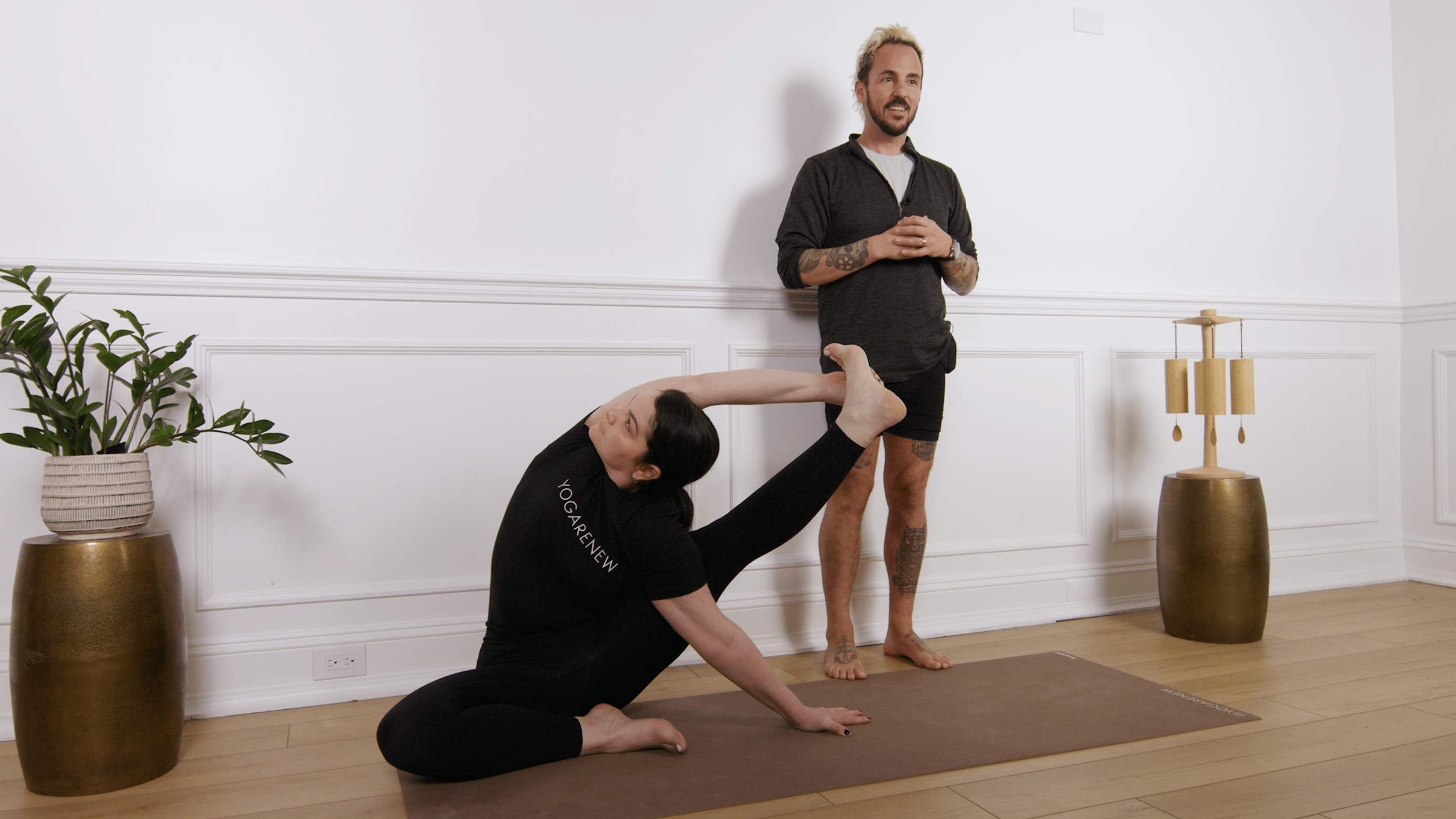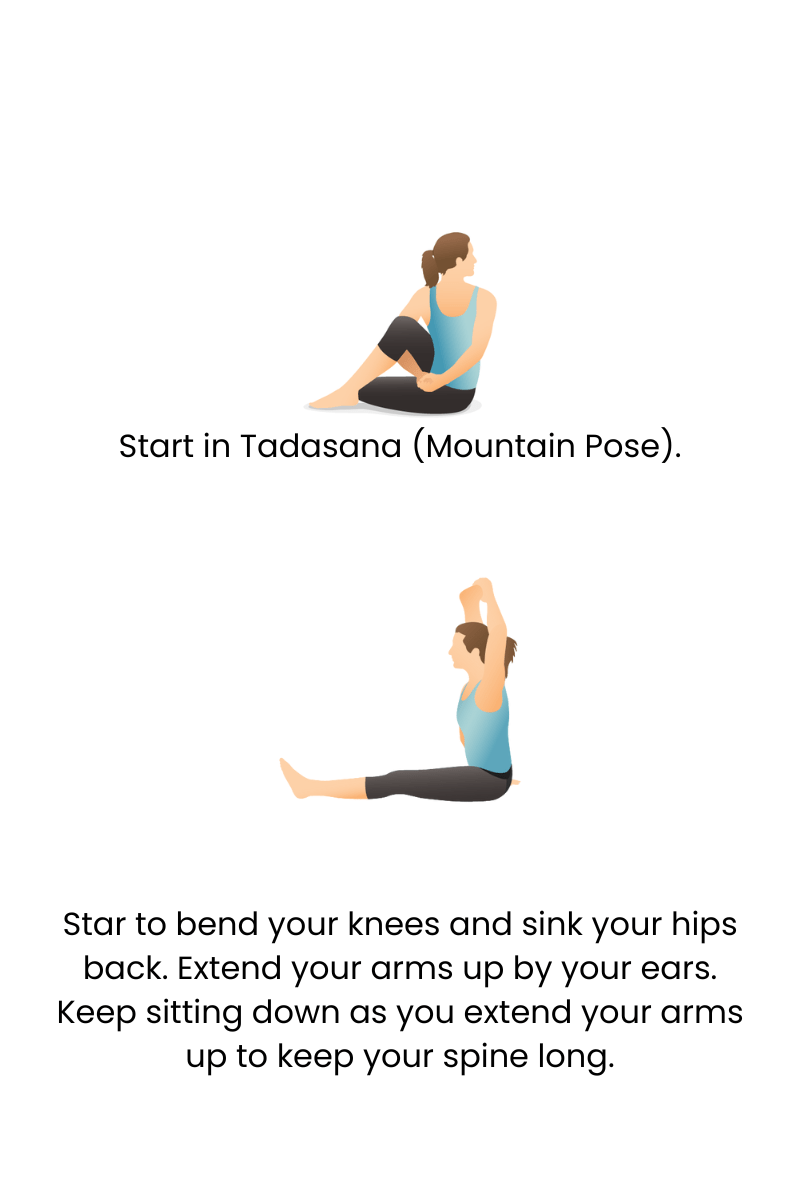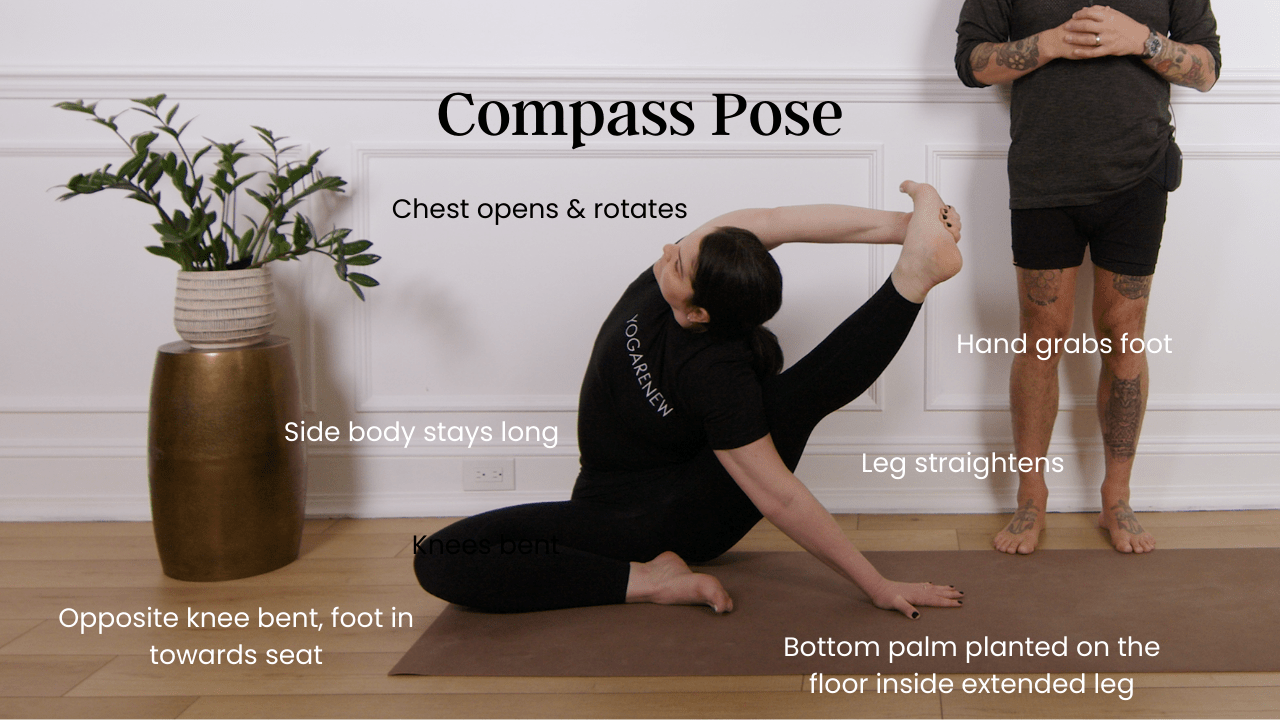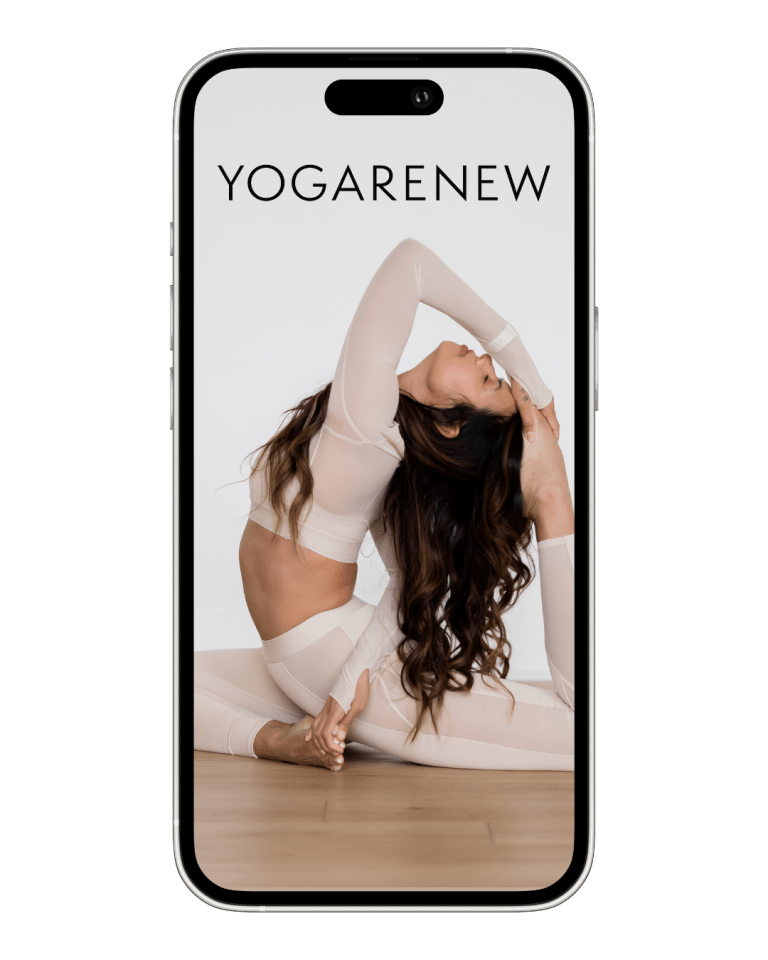What is Compass Pose?
English Name: Chair Pose
Sanskrit Name: Parivrtta Surya Yantrasana (pronounced pah-ree-VRIT-tah SOOR-yah yan-TRAH-suh-nuh)
Category: Hip Opener, Twist, Advanced, Seated

English Name: Chair Pose
Sanskrit Name: Parivrtta Surya Yantrasana (pronounced pah-ree-VRIT-tah SOOR-yah yan-TRAH-suh-nuh)
Category: Hip Opener, Twist, Advanced, Seated
Compass Pose, or Parivrtta Surya Yantrasana, is an advanced seated twist and hamstring opener that challenges balance, flexibility, and focus. This dramatic-looking pose involves extending one leg skyward while twisting the torso, creating a striking asymmetrical shape that resembles a compass.
More than just a show-stopping posture, Compass Pose builds deep mobility in the hips, hamstrings, spine, and shoulders. It requires a combination of core stability, breath awareness, and open-minded patience—making it a favorite in more advanced Hatha and Vinyasa practices.
Opens Hamstrings: Deep stretch for the extended leg and hip
Improves Spinal Flexibility: Engages and lengthens the thoracic spine through a twist
Expands Shoulder Mobility: Encourages external rotation and openness in the upper body
Strengthens Core: Requires stability and balance in the abdominals and side body
Boosts Mental Focus: Demands presence, breath control, and patience
Enhances Body Awareness: Teaches coordination and fine motor control
Begin in a seated cross-legged position or from Half Lord of the Fishes Pose.
Hug your right knee into your chest and thread your right arm under the right knee.
Grab the outside of your right foot with your left hand.
Inhale to lengthen the spine. On an exhale, begin to straighten the right leg upward while keeping the arm under the leg.
Rotate your torso slightly left and gaze upward or straight ahead.
Use your breath to maintain length and ease. Keep the lifted leg active and the shoulders soft.
Hold for 3–5 breaths, then release slowly and switch sides


Compass Pose is a beautiful synthesis of flexibility, strength, and awareness. It opens the entire back body—from the hamstrings to the shoulders—while integrating a mindful spinal twist. Practicing this pose builds patience and presence, teaching you how to create space within challenge. Though advanced in nature, Compass Pose offers a rewarding opportunity to explore depth, alignment, and elegance in your seated practice.
It’s considered an advanced pose, but beginners can work toward it with preparatory stretches and props.
Use a yoga strap or keep the knee slightly bent to avoid overstretching and still receive the benefits.
Yes, if forced. Always warm up the shoulders first and skip the bind if there’s any pain or tightness.
Prepare with hamstring stretches (e.g., Seated Forward Fold), hip openers (e.g., Pigeon), and spinal twists.
Both. It demands hamstring and shoulder flexibility, but also core engagement and balance to hold the shape.

Explore classes & pose tutorials for any style, format, duration or experience level with a free account in the YogaRenew app. Or subscribe and gain access to workshops, live classes and more.